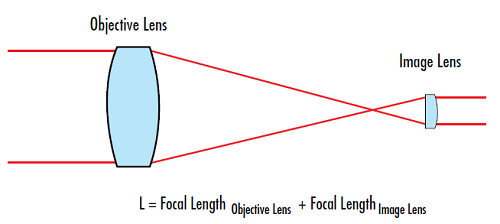Laser beam expanders increase the diameter of a collimated input beam to a larger collimated output beam for applications such as laser scanning, interferometry, and remote sensing. Contemporary laser beam expanders are afocal systems developed from well-established optical telescope fundamentals. In such systems, the object rays enter parallel to the optical axis of the internal optics and exit parallel to them. This means that the entire system does not have a focal length.
Telescope Theory
Optical telescopes, traditionally used to view distant objects such as celestial bodies in outer space, are divided into two types: refracting and reflecting. Refracting telescopes utilize lenses to refract, or bend, light, while reflecting telescopes utilize mirrors to reflect light.
There are two categories of refracting telescopes: Keplerian and Galilean. A Keplerian telescope consists of lenses with positive focal lengths separated by the sum of their focal lengths (Figure 1). The lens closest to the object being viewed, or source image, is called the objective lens, while the lens closest to the eye, or image created, is called the image lens.
Read more at Edmund Optics:
https://www.edmundoptics.com/knowledge-center/application-notes/lasers/beam-expanders/
